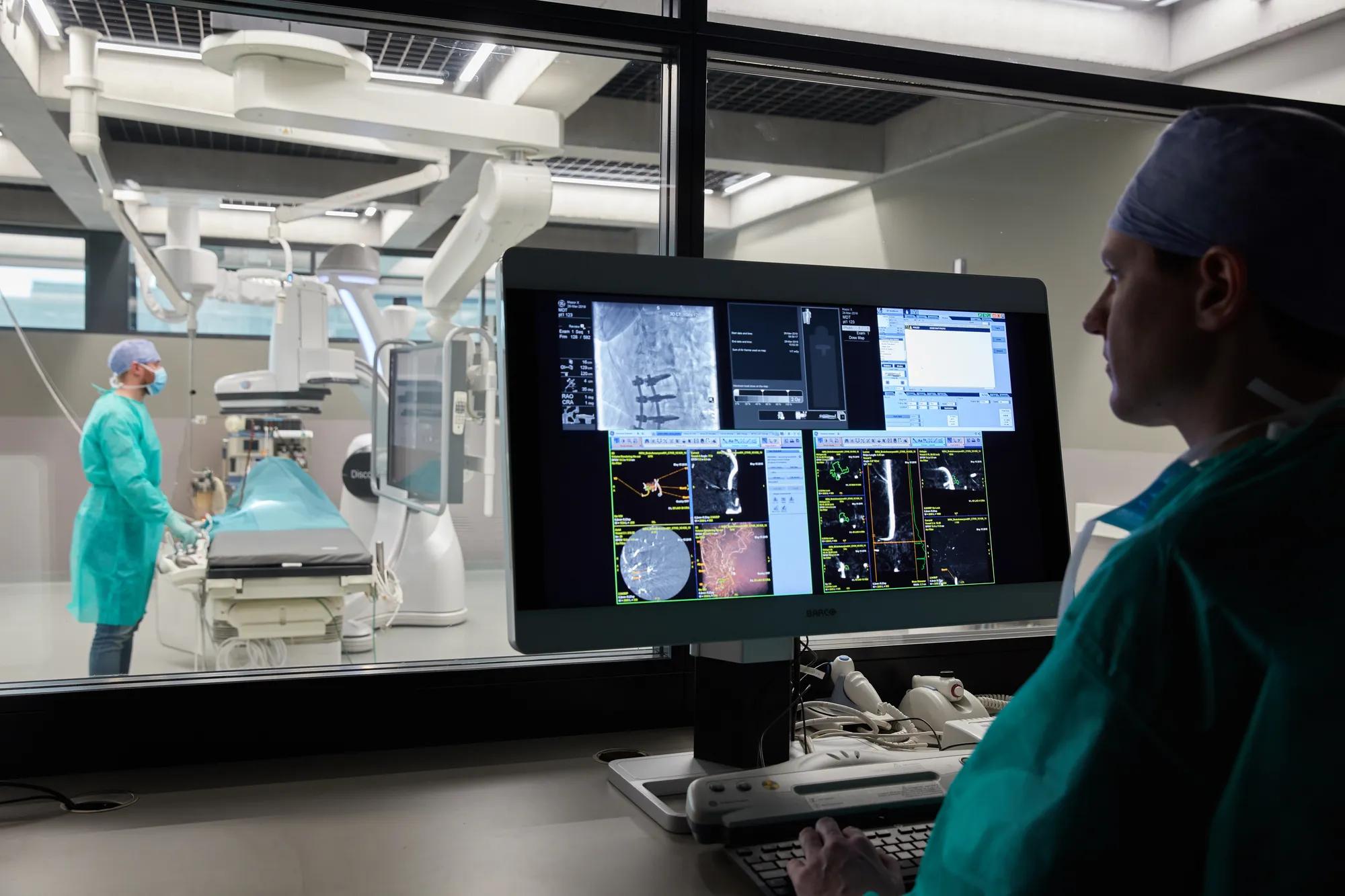History
For millennials, it may sound logical that medical images are centralized on one digital platform in hospitals. It is not, however. If you look at the history of data storage in medical environments, it was often very departmentalized in the past. On top of that, many medical files needed their own transition from a physical format to a digital one first. Think of radiology films, for instance, which were among the first analog medical files to enter digitization.
When hospitals and enterprises started using electronic health records (EHRs), they realized that different care groups had their own approaches to image management, but also that there were similarities between them. The term “enterprise imaging” has become the general term that describes this confluence of image governance from different specialties into one platform.

What is enterprise imaging?
Enterprise imaging is defined as:
a set of strategies, initiatives, and workflows implemented across a healthcare enterprise to consistently and optimally capture, index, manage, store, distribute, view, exchange, and analyze all clinical imaging and multimedia content to enhance the electronic health record.
In short, enterprise imaging can be seen as the efforts that result in a digital centralization of all kinds of medical imaging and video information in a healthcare organization. A patient’s electronic health record is enriched with visual material that gives more insight in their case(s). This could include:
- CT scans
- MRIs
- Ultrasounds
- Videos or photographs, for example taken during a dermatology exam
- Screenshot and or recordings from surgeries
- Digital pathology slides
- …
In this way, for example, radiology images are available during a surgical procedure, and also before, during surgical preparation. This is of course the best practice in patient care as it makes it more efficient, and safe with regards to adverse events and success factors for the surgery itself. Apart from enhancing collaboration between different specialties, a digital platform brings along other advantages too: physicians are less bound to fixed desktops in offices and can access files at any time and from any location, for example at home or on a mobile device while doing rounds.
The concept of enterprise imaging was introduced by the HIMSS-SIIM Enterprise Imaging Workgroup in a series of papers in 2016. The term is older than that, as it used to refer only to greater accessibility of PACS images throughout a medical organization. Enterprise imaging goes far beyond that, being strongly defined by imaging governance and strategy, and backed by IT infrastructure.

Cross-pollination
Medical teams are increasingly using data from other disciplines to have a more complete view of the patient’s conditions and to determine therapeutical plans. This comes with a two-way benefit: enterprise imaging platforms make it easier to collaborate, and collaborations eventually result in better enterprise imaging systems. Clinical collaboration is important, but it is vital that it can be done in an orderly way. Because if it’s not structured well, a lot of non-organized data can also lead to confusion and mistakes.
A logical result is that management of clinical data becomes a much more centralized task, in which two groups in a healthcare organization play bigger roles than in the past: high-level management and the IT department.
Enterprise imaging: what to do when taking up the challenge
1. Management
Setting up enterprise imaging in an organization that doesn’t have it yet, is a big task that needs a thorough business case. It’s up to central management to identify the needs in the different departments, work out how they want to move forward with the platform once it’s installed, and of course also secure the budget that is needed to install and maintain it. Things to keep in mind are:
- Imaging strategy: what infrastructure do we have now, and where do we want to go in future? Which standards do we use for medical and non-medical data? Does the integration of enterprise imaging impact workflows for specific departments? Do we want to store data inhouse or in the cloud, and what are the costs?
- Legal requirements: Which data should we store, and for how long? Should data be stored in lossless quality? Legal grounds for data storage vary between countries, and sometimes even between regions. So it’s important to look into this in a preparatory phase, and to consider the costs that come with data storage as well.
- Market research: take the time to get to know what’s available on the market. Apart from large vendors, there are also smaller, new players on the market that offer powerful solutions. Additionally, consider how large your medical organization is, and take that into account too. A last question to consider here: is our imaging infrastructure compatible with the different options?
- Patient privacy: different types of data permissions need to be identified within the system for its different types of users. If you intend to share data with other enterprises for education or research purposes, it should be possible to de-identify information.
- Cybersecurity: just like every other digital system, enterprise imaging platforms are vulnerable to cyberattacks, so having strong measures for protection is important – and equally so, raise awareness among your employees about cybersecurity.
2. IT
The role of IT departments in enterprise imaging is central. Whereas in the past, different departments managed their own images (physically or digitally), or the IT team managed different systems per department, it is a technological challenge to unify the different needs.
It’s important that an enterprise imaging platform is scalable and flexible: it must be able to integrate new standards as they emerge. Furthermore, the system must be integrated within the different professionals’ workflows. So it’s important that the IT department is involved at all times in the business process, starting from the very beginning. They will be the ones managing the platform, so they need to know it well and they need to be trained on the platform itself too.






